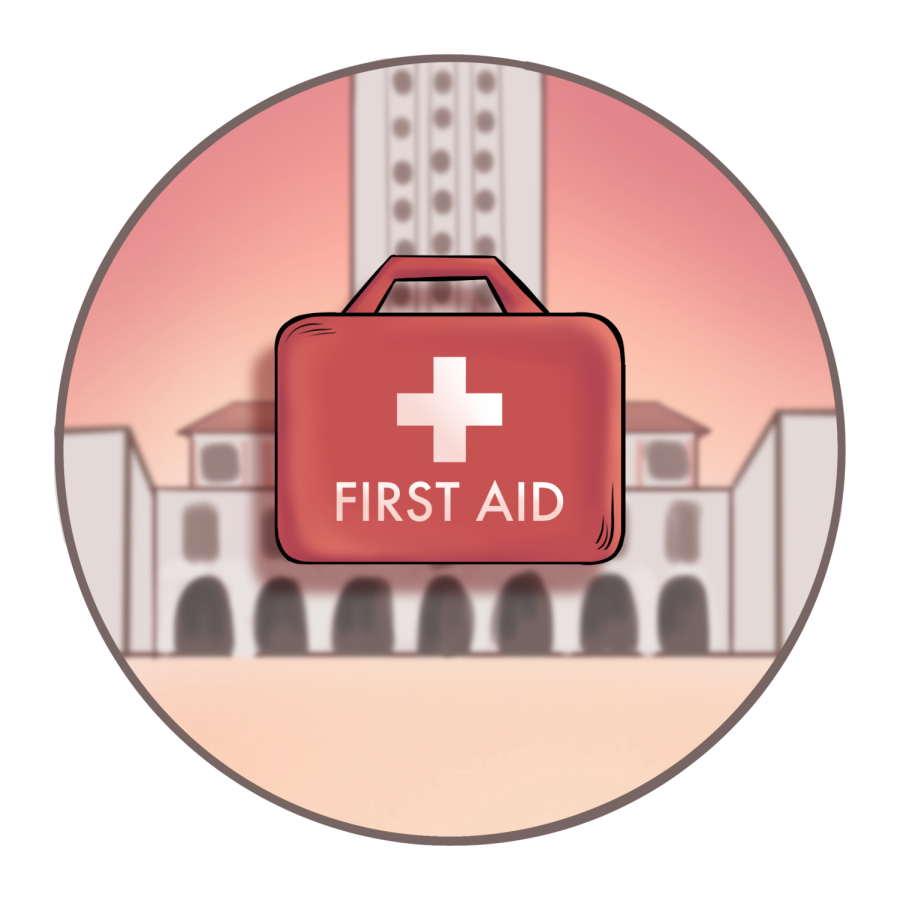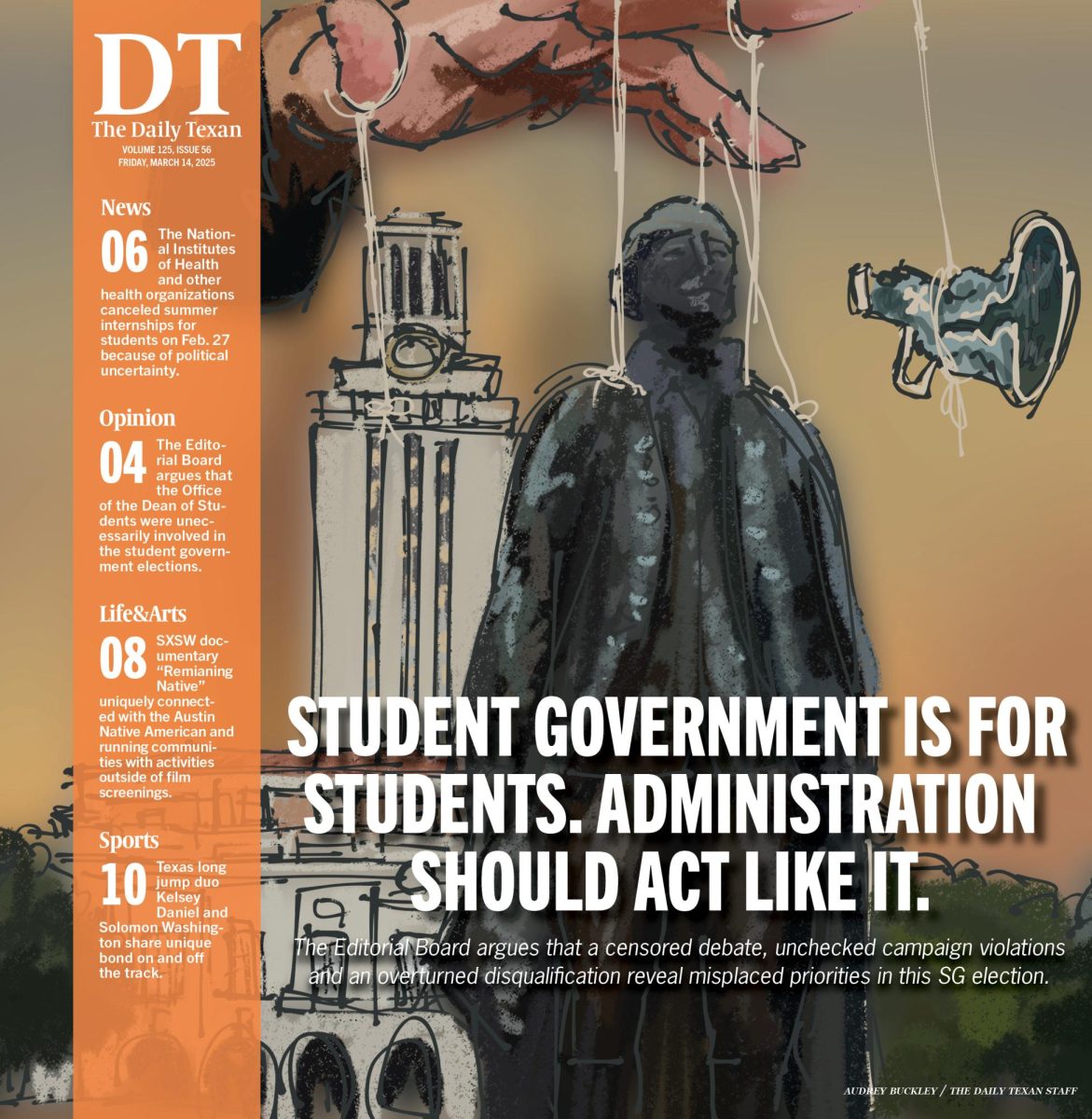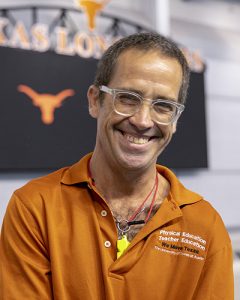Long EMS response times, lack of first aid training leave UT-Austin students vulnerable
UT Resident Assistants are not trained in CPR, but bystander student responses are crucial in incidents of cardiac arrest, according to a Travis County EMS captain.
May 13, 2022
Austin-Travis County Emergency Medical Services averages a campus response time of eight minutes and 41 seconds in 2022, according to the EMS data team, but according to the National Library of Medicine, a person can die of cardiac arrest in as soon as eight minutes. Resident assistants in dorms at UT currently do not receive CPR or any first aid training.
“I actually had no idea that they aren’t trained in first aid. That’s interesting. It would be nice if they were trained,” government sophomore Noemi Montoya said. “I would feel more secure in case of an emergency, especially because I’ve been living on campus for two years now.”
Cardiac arrest is the sudden and unexpected loss of heart function. CPR can be performed in response to cardiac arrest to help keep the blood flowing until medics arrive and can double or triple victim survival rates. According to The Red Cross, the nation-wide average first response time is eight to 12 minutes, but permanent brain damage is likely to occur within three to six minutes.
RAs are protected by the Texas Good Samaritan Law and are therefore allowed to perform CPR on any individual. However, as a part of their RA job duties, they are instructed to first call 911 in case of all emergencies and follow any instructions given by the medics. The Residence Life Emergency Procedures Manual, obtained through a data request, states “do not move or touch the person experiencing the emergency, unless instructed to do so by the 911 operator.”
“We want to focus on getting the best care for residents as quickly as possible,” said Aaron Voyles, director of residence hall operations for University Housing and Dining. “Which, in our current protocols, is through contacting 911 and getting those professionals quickly to the scene.”
If the victim appears not to be breathing when 911 is called, the 911 operator will walk the bystander through the steps of CPR.
“The benefit to already knowing how to do CPR is that it takes anywhere between 90 seconds to even five minutes to get that CPR started by the time they call 911,” said Christa Stedman, the Austin-Travis County EMS captain. “And in situations like this, people are not being their calm, rational selves. They’re hysterical. They’re not listening to instruction, and they’re trying to do 57,000 things at once, because this is not a situation that they’re normally put in.”
The American Heart Association states that even sixth graders can successfully perform CPR. Additionally, according to the association, “any attempt at CPR … is better than no attempt.”
Seventy-two percent of people experiencing cardiac arrest that Austin-Travis County EMS responded to last year did not revive CPR from a bystander before paramedics arrived.
“If (the victim) is alert enough to know what’s happening, they’re going to tell you very quickly, and then you stop and call 911,” Stedman said. “But if somebody is truly unconscious and you do CPR on them, it’s not going to make the situation worse. It can only stand to make it better.”
Longhorn EMS, an extension of Student Government made up of EMT-certified students, is in the process of strengthening its program and is seeking approval from UT to be notified and respond to emergencies on campus.
“One of the benefits of (Longhorn EMS) responding on campus would simply be our knowledge of the University,” biology senior Grace Drew said. “I think that’s a benefit that’s often overlooked; UT students really are experts of UT’s campus.”
UT-Dallas has successfully implemented a similar organization called University Emergency Medical Response.
“Colleges of our size, it’s almost like we have a small city within a city,” organization director Sheila Elliott said. “(University Emergency Medical Response) really does make a big difference, not just on the campus, but throughout the city.”
Operating since 2017, the first responder organization reported a two-minute-and-50-second average response time from January through March of 2022. University Emergency Medical Response at UT-Dallas also received the Texas Department of State Health Services’ First Responder Award in 2018 for its “leadership in EMS in patient care, public access, medical control, disaster preparedness, public education or training.”
“I have a son who has had five open-heart surgeries,” Elliott said. “He doesn’t go to UT-Dallas, but I know of two other kids on campus (at UT-Dallas) that have the same heart condition, and the moms of those kids in particular have a very strong peace of mind knowing that (University Emergency Medical Response) is there in any time of need. That peace of mind is priceless.”
Though UT does not plan to integrate first aid or CPR training into RA training, Voyles said the University is open to providing optional first aid training as a part of personal development for RAs that are interested.
“Cardiac arrest is one of those things where bystander CPR is 100% the most important thing and will give the patient the best chance to survive,” Stedman said. “Whether it takes us nine minutes and 50 seconds or 10 minutes and 30 seconds, if they’re getting good bystander CPR, then their chances are going to be better no matter how long it takes us to get there.”














